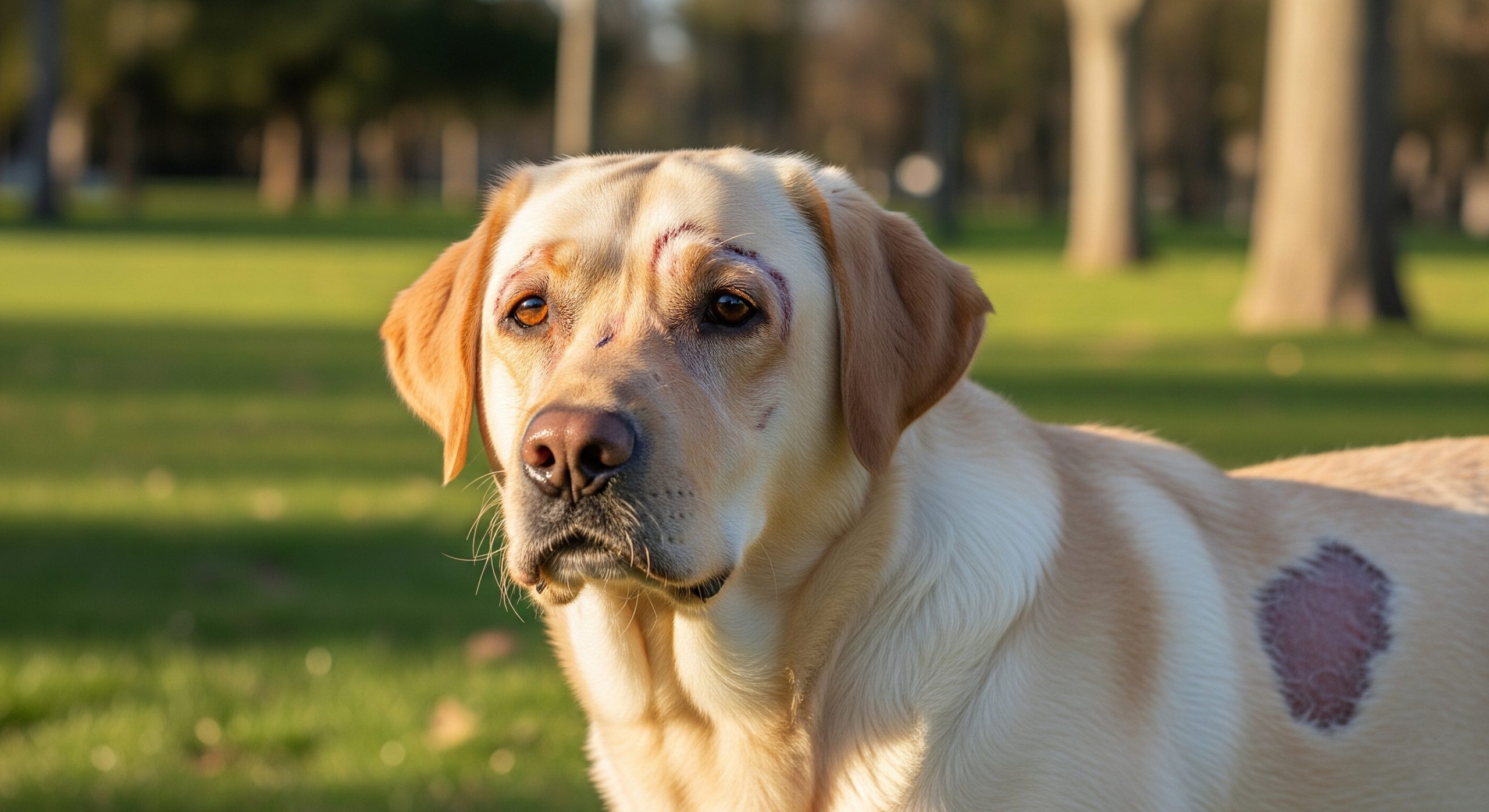
How frequently does your pet scratch? Have they lost fur patches or developed red and scaly patches? If yes, the most common cause can be mange.
Mange is a skin condition caused by mites that irritates your pet’s skin. Mange can be scary for pet owners at first. But, with the right treatment, most pets recover fully and get playful again.
In this blog, we will walk you through everything you need to know. This blog covers what mange is, how it is diagnosed, what treatment looks like, and what to expect during the recovery. By the end of this article, you will be confident about how to help your furry friend.
What is Mange Exactly?

Mange is a skin disease which can be caused by mites. These tiny parasites either burrow under your pet’s skin or live in hair follicles. Which triggers itching, irritation, and hair loss. There are two types of mange you should know about –
1) Sarcoptic Mange (Scabies)
- It is caused by the Sarcoptes scabiei mite.
- It can be itchy and makes your pet uncomfortable.
- It is highly contagious to other pets and humans too (Note – People usually cause temporary itching).
- The signs include intense scratching, red, or inflamed skin, crusty sore, and patchy hair loss.
2) Demodectic Mange (Demodex)
- It is caused by Demodex mites, which naturally live on your pet’s skin in small numbers.
- It can become a problem only if your pet’s immunity system is weak.
- It is not contagious to other pets or humans.
- The signs include patchy hair loss, scaly skin, and in severe cases, secondary infections.
Step 1 – Get a Proper Diagnosis
Whenever you suspect mange, you should first contact the veterinarian. Why? As mange looks like allergies, fungal infection, or even bacterial skin problems. So, a vet can only confirm what your pet is going through.
Your vet may –
- Take a skin scraping and examine it.
- Pluck a few hairs or perform a skin biopsy.
- Sometimes, mites are hard to find. So, if your pet’s symptoms strongly suggest mange, then your vet may start treatment directly.
This step is very important. As the right diagnosis makes sure your pet gets the correct treatment.
Step 2 – Treatment Options
Your pet’s treatment depends on the type and severity of mange. But, the most common treatment options are –
1) Oral Medications
Vets often prescribe medications like ivermectin, milbemycin oxime, afoxolaner (NexGard®), sarolaner (Simparica®), or fluralaner (Bravecto®). These medicines work systemically to kill mites inside out.
2) Topical Treatments
You can use shampoos, dips, and spot-on solutions. For demodectic mange, lime sulfur dips and amitraz dips. Some new topical products like moxidectin + imidacloprid (Advantage Multi®) are effective.
3) Medicated Baths
You can use shampoos containing benzoyl peroxide. Sometimes it helps open hair follicles so medications can reach mites more effectively.
4) Antibiotics
In the case of scratching sores or infections caused by scratching, your veterinarian may prescribe antibiotics to prevent secondary bacterial infections.
Step 3 – What Happens After Treatment Begins?
Here, we have provided you a real timeline of what you may notice once the treatment will start –
1) Week 1-2 – Itching can get worse at first. But, don’t panic. This can happen because mites dying off trigger an immune response.
2) Week 2-4 – You will notice that scratching will be lesser. And, new fur growth may start in bald patches. Your pet’s skin will now look less red and irritated.
3) Week 4-8 – Till this time, most pets show improvement. The pet’s fur will continue to regrow and heal sores.
4) Beyond 8 weeks – Many cases with severe mange infections may take longer time to recover as their immune system is weak. It may sometimes take up to 3-4 months.
Pet owners should stick to a treatment plan, as stopping too soon can allow mites to come back.
Step 4 – Caring for Your Pet at Home
Your support and care can make the recovery smooth. Follow these few tips –
- Bathe as Directed – You should use medicated shampoos as the vet prescribes. Just don’t over do it, as too much bathing can dry your pet’s skin.
- Wash Bedding & Toys – In the case of sarcoptic mange, mites can survive in the environment of your pet. You should wash bedding, collars, and toys in hot water regularly.
- Limit Contact – If your pet has sarcoptic mange, avoid contact with other pets until your vet gives a clean chit.
- Boost Nutrition – Strengthen your pet’s immune system with a balanced diet.
- Keep Nails Trimmed – Trim your pet’s nails. It will reduce damage from scratching.

Step 5 – Emotional Support
Pets with mange become restless, are irritated and may feel depressed because of the discomfort. Here, your love and affection plays an important role. You should spend time cuddling, playing gently, or just sit besides them. You have to remember that healing is about helping your pet feel secure and loved.
Step 6 – When to Call the Vet?
When the treatment is started, you have to keep an eye out for warning signs. Contact your vet if you notice these things –
- Scratching
- Spreading bald patches or worse skin irritation
- Oozing sores, pus, or foul-smelling skin
- Lethargy, appetite loss, or unusual behavior
These points may tell us that infection is spreading or need a new treatment plan.
End Stages of Untreated Mange
If mange is not treated properly or on time, it can progress into severe stages –
- Widespread hair loss
- Thick, crusty skin
- Painful sores and open wounds
- Secondary bacterial or fungal infections
- Weakness or weight loss in extreme cases
But the good news is with instant treatment, pets never reach this stage.
Final Thoughts
We all know that mange can become uncomfortable and distressing for your pet, right? But, with perfect diagnosis, proper treatment, and a little care at home. Your pet will recover fully. We have to keep patience as results cannot be expected overnight. But with a proper treatment plan your pet is healing.
The best thing you can do for your pet if they have been diagnosed with mange. You should remain calm, follow your vet’s instructions, and be loving and encouraging. With time, you will have your happy and healthy furry friend with you.
Frequently Asked Questions
1) How long does it take for mange treatment to work?
Most pets show improvement within 2–4 weeks. Full recovery usually takes 6–8 weeks, though severe cases can take up to 3–4 months. Localized demodectic mange may clear on its own in 1–2 months.
2) What are the end stages of mange?
If untreated, mange can lead to widespread hair loss, thickened skin, severe sores, and secondary infections. Pets may also become lethargic or weak. Thankfully, early treatment prevents these complications.
3) What is the fastest way to cure mange?
The fastest, safest approach is veterinary-prescribed treatment. Oral medications, topical dips, and medicated shampoos are highly effective. Home remedies alone are not recommended because they rarely eliminate the mites completely.

